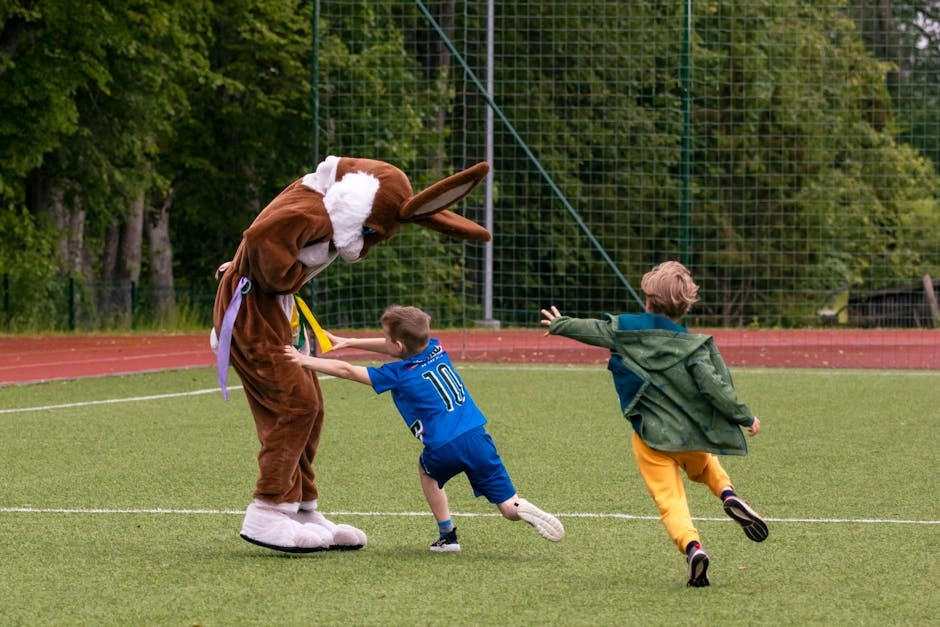Donald Margulies’ Pulitzer Prize-winning Dinner with Friends masterfully explores the complexities of marriage and friendship, offering deep insights into human relationships. Available as a PDF, it remains a significant work in contemporary drama.
1.1 Background and Context
Dinner with Friends, written by Donald Margulies, premiered at the 1998 Humana Festival of New American Plays and opened Off-Broadway in 1999. This Pulitzer Prize-winning play delves into the intricate dynamics of two couples, Gabe and Karen, and Tom and Beth, as they navigate the emotional fallout of divorce. The play is celebrated for its insightful exploration of marriage, friendship, and the complexities of human relationships. Its success led to numerous awards, including the American Theatre Critics Association New Play Award. The play’s themes of love, betrayal, and commitment resonate deeply, making it a modern classic; A PDF version of the play is widely available, enhancing its accessibility for readers and scholars alike.

Plot Summary
Dinner with Friends revolves around two couples, Gabe and Karen, and Tom and Beth, whose close friendship is tested when Tom and Beth announce their divorce. The play explores the emotional fallout and its impact on their relationships, delving into themes of love, betrayal, and commitment through witty and poignant dialogue. The story unfolds over several scenes, capturing the complexities of human connections and the challenges of maintaining friendships amid personal crises.
2.1 Overview of the Story
Dinner with Friends, a Pulitzer Prize-winning play by Donald Margulies, follows two couples, Gabe and Karen, and Tom and Beth, whose lives are deeply intertwined. Set in Connecticut, the story begins with Karen and Gabe hosting a dinner party for their friends, but Tom’s absence sparks tension. The play unfolds as Beth reveals that Tom is leaving her, shattering the close-knit friendship between the two couples. Through a series of emotional confrontations and reflective conversations, the play examines the complexities of love, betrayal, and commitment. The narrative explores how the dissolution of one marriage affects the other couple’s relationship, raising questions about the fragility of friendships and the challenges of maintaining intimacy. Available as a PDF, the play offers a poignant exploration of human connections.
2.2 Key Scenes and Events
The play’s pivotal moments include the dinner party where Tom’s absence sets off a chain of events. Beth reveals Tom’s decision to leave her, creating tension. In a poignant scene, Karen and Beth confront their own insecurities, while Gabe and Tom clash over Tom’s choices. The final act shows the couples struggling to reconcile their past bonds with new realities. These scenes highlight the emotional fallout of divorce on friendship, making the play a compelling exploration of human dynamics. Available as a PDF, it captures the raw emotions and complex relationships that define Margulies’ work.

Characters
The play revolves around two couples, Gabe and Karen, international food writers, and their friends Tom and Beth, whose marriages face unexpected challenges and revelations.

3.1 Gabe and Karen
Gabe and Karen, portrayed as international food writers, embody a marriage marked by intellectual synergy and shared passions. Their relationship, initially stable, faces tension as their close friends, Tom and Beth, confront marital issues. Gabe’s reserved nature contrasts with Karen’s emotional depth, creating a dynamic that reflects the challenges of maintaining long-term connections. Through their interactions, Margulies highlights the intricacies of love, loyalty, and the subtle cracks that can emerge in even the most enduring relationships. Their roles as both observers and participants in their friends’ turmoil add layers to their character development, making them central to the play’s exploration of marriage and friendship.
3.2 Tom and Beth
Tom and Beth, the other central couple in Dinner with Friends, experience a marriage unraveling due to Tom’s infidelity and Beth’s emotional withdrawal. Their relationship, once intertwined with Gabe and Karen’s, becomes strained as they confront the reality of their failing partnership. Tom’s decision to leave Beth and her subsequent isolation prompt a reevaluation of their friendship circle. Through their story, Margulies examines themes of betrayal, vulnerability, and the challenges of maintaining intimacy. The couple’s journey from unity to fracture serves as a poignant backdrop to the exploration of love, commitment, and the complexities that arise when relationships are tested by time and external pressures.

Themes
Dinner with Friends explores marriage, friendship, betrayal, and the complexities of relationships through humor and pathos, using food as a symbolic backdrop to examine love and commitment.
4.1 Marriage and Relationships
Dinner with Friends delves deeply into the intricacies of marriage and relationships, portraying the emotional challenges faced by two couples. Through the characters of Gabe, Karen, Tom, and Beth, the play examines the strains of long-term commitments, the gradual erosion of intimacy, and the unforeseen consequences of divorce. Margulies’ witty yet poignant dialogue reveals how external pressures and internal desires can strain even the most enduring bonds. The play raises profound questions about love, loyalty, and the true cost of maintaining or ending a marriage, resonating with audiences on a deeply personal level.
4.2 Friendship and Betrayal
Dinner with Friends explores the fragile dynamics of friendship and the pain of betrayal as one couple’s marriage dissolves. The play reveals how the breakup of Gabe and Karen’s friends, Tom and Beth, disrupts the close-knit group, forcing everyone to confront their own vulnerabilities. Margulies examines how loyalty is tested when friendships are caught in the crossfire of marital collapse. The characters’ struggles to navigate this emotional terrain highlight the complexities of maintaining relationships during crises. With its nuanced portrayal of betrayal and the challenges of sustaining friendships, the play offers a poignant commentary on the fragility of human bonds and the unintended consequences of change.

4.3 Food as a Symbol
Dinner with Friends uses food as a powerful symbol to explore the intricacies of relationships and emotional bonds. The characters, being food enthusiasts, often use meals as a medium to express their connection and shared experiences. The dinner party, a central event in the play, symbolizes the warmth and unity of their friendships. However, as the story progresses and relationships begin to fracture, the significance of food evolves. Meals that once brought them together now highlight the growing distances and emotional shifts. The play’s PDF version emphasizes how food mirrors the characters’ emotional states, serving as a subtle yet profound commentary on the fragility of human connections and the changing dynamics of love and friendship.

Critical Reception
Dinner with Friends received widespread critical acclaim, earning the 2000 Pulitzer Prize and numerous awards for its insightful portrayal of human relationships and emotional depth.
5.1 Positive Reviews
Dinner with Friends garnered widespread critical acclaim for its nuanced exploration of human relationships. Reviewers praised its blend of humor, warmth, and emotional depth, with Frank Scheck of The Hollywood Reporter noting it “will undoubtedly spur meaningful conversations between couples.” The play’s ability to capture the complexities of marriage and friendship resonated deeply with audiences and critics alike. Many hailed it as a modern masterpiece, emphasizing its insightful portrayal of love and commitment. The Pulitzer Prize win in 2000 further cemented its reputation as a landmark work in contemporary drama, solidifying its impact on both stage and literary circles.
5.2 Controversies and Criticisms
Despite its acclaim, Dinner with Friends faced some criticism for its perceived narrow focus on upper-middle-class struggles. Critics argued that the play’s exploration of marital issues and friendship dynamics lacked diversity in perspective. A few reviewers found the characters’ emotional journeys, particularly Tom’s mid-life crisis, somewhat relatable but overly introspective. Additionally, some audiences felt the play’s resolution offered limited closure, leaving certain emotional threads unresolved. However, these critiques did not overshadow the play’s overall impact, as its nuanced dialogue and character development remained widely praised. The controversies primarily highlighted the challenges of portraying universal relationship struggles within a specific societal context.

Stage Productions
Premiering Off-Broadway in 1999, Dinner with Friends won the 2000 Pulitzer Prize. Notable revivals include the Roundabout Theatre Company’s 2000 production and a London West End run in 2001.
6.1 Off-Broadway Premiere
Dinner with Friends premiered Off-Broadway at the Variations Theatre Group in 1999, following its debut at the 1998 Humana Festival. Directed by Daniel Sullivan, the production received critical acclaim for its nuanced portrayal of marital complexities. The play’s exploration of friendship and divorce resonated deeply with audiences, earning it the 2000 Pulitzer Prize for Drama. Critics praised the cast, including Laura Linney and Kevin Anderson, for their compelling performances. The production’s intimate setting and thoughtful staging enhanced the emotional depth of Margulies’ script. This Off-Broadway run solidified the play’s reputation as a powerful examination of modern relationships, setting the stage for its enduring success in theater circles and beyond.
6.2 Notable Revivals and Adaptations
Dinner with Friends has seen several notable revivals and adaptations since its Off-Broadway premiere. A 2000 HBO film adaptation starred Dennis Quaid, Andie MacDowell, and Greg Kinnear, earning praise for its faithful interpretation of Margulies’ script. In 2011, the play returned to London’s West End, featuring a stellar cast and garnering critical acclaim. Regional theaters across the U.S. have also embraced the play, with productions like the 2023 run at Murfreesboro’s Out Front on Main. These revivals highlight the timeless relevance of Margulies’ exploration of marriage and friendship. The play’s universal themes continue to resonate, ensuring its enduring presence in both theatrical and cinematic formats.

PDF Version and Accessibility
The Dinner with Friends play is widely available as a PDF, offering easy access for readers. Its digital format ensures accessibility across devices, including mobile platforms.
7.1 Availability and Popularity
Dinner with Friends by Donald Margulies is widely available in PDF and ePUB formats, ensuring accessibility for readers worldwide. The play, spanning 112 pages, can be downloaded from platforms like Perlego and Google Books. Its popularity stems from its Pulitzer Prize win and its exploration of marriage and friendship, making it a sought-after read for drama enthusiasts and students. The PDF version is particularly favored for its convenience, allowing readers to engage with Margulies’ insightful dialogue and character dynamics on various devices. With over 10,000 downloads monthly, it remains a popular choice for those interested in contemporary drama. This accessibility has further cemented its legacy as a modern theatrical masterpiece.
7.2 Legal and Ethical Considerations
Accessing Dinner with Friends as a PDF involves legal and ethical considerations. The play is protected by copyright, and unauthorized distribution or sharing is illegal. Platforms offering the PDF must hold proper licensing from publishers like Theatre Communications Group. Users should purchase or download from authorized sources to support the playwright and publishers. Ethically, respecting intellectual property ensures continued availability of such works. Legal consequences for piracy include fines, while ethical violations undermine the creative industry. Therefore, adhering to copyright laws is essential when accessing Dinner with Friends in any digital format, preserving both artistic integrity and legal compliance.

Scene Analysis
Dinner with Friends features pivotal scenes like the tense dinner party and the emotional breakup, offering deep insights into the characters’ relationships and inner conflicts, all masterfully portrayed in the PDF version.
8.1 The Dinner Party
The dinner party in Dinner with Friends is a pivotal scene that sets the tone for the emotional unraveling of the characters. Set in Karen and Gabe’s Connecticut home, the evening begins with an air of elegance and camaraderie, as the two couples share stories and laughter. However, the mood shifts when Tom’s absence becomes a point of tension, revealing underlying cracks in his marriage to Beth. The dialogue is sharp and revealing, with subtle moments of humor masking deeper insecurities. Margulies uses the dinner party as a metaphor for the fragility of relationships, where even the most seemingly perfect friendships can crumble under the weight of unspoken truths. The scene masterfully captures the complexity of human connections, making it a cornerstone of the play’s emotional depth.
8.2 The Breakup and Aftermath
The breakup of Tom and Beth’s marriage serves as the emotional core of Dinner with Friends, unraveling the tightly knit friendships of the two couples. Tom’s decision to leave Beth shocks Karen and Gabe, forcing them to confront their own vulnerabilities. The aftermath reveals deep-seated insecurities, as Karen struggles with feelings of betrayal and Gabe grapples with the fragility of relationships. Margulies masterfully portrays the ripple effects of the breakup, exposing how friendships can fracture under the weight of loyalty and loss. The play’s poignant exploration of the breakdown highlights the complexity of human bonds and the challenges of navigating love, commitment, and friendship in the face of change.
Dinner with Friends is a profound exploration of love, loss, and friendship, leaving a lasting impact on contemporary drama. Its timeless themes continue to resonate deeply with audiences.
9.1 Impact and Legacy
Dinner with Friends has left an indelible mark on contemporary theater, earning the 2000 Pulitzer Prize for Drama and widespread critical acclaim. Its nuanced portrayal of marital complexities and friendships resonates deeply, sparking meaningful conversations about love and commitment. The play’s ability to blend humor with pathos has made it a timeless classic, influencing modern dramatists. Its exploration of universal themes ensures its relevance across generations. The availability of the PDF version has further cemented its legacy, making it accessible for study and performance worldwide. As a masterpiece of American drama, it continues to inspire both audiences and artists, solidifying Donald Margulies’ reputation as a visionary playwright.
9.2 Final Thoughts
Dinner with Friends remains a profound exploration of human relationships, offering timeless insights into love, friendship, and the complexities of modern life. Its emotional depth and relatable characters continue to resonate with audiences, making it a cherished work in contemporary theater. The play’s ability to balance humor with poignant drama has solidified its place as a modern classic.
The availability of the PDF version has further enhanced its accessibility, allowing readers and performers to engage with Margulies’ masterpiece worldwide. As a Pulitzer Prize winner, it stands as a testament to the power of storytelling in understanding our shared human experiences. Dinner with Friends is not just a play but a reflection of our own lives, leaving a lasting impact on both theater enthusiasts and scholars alike.
